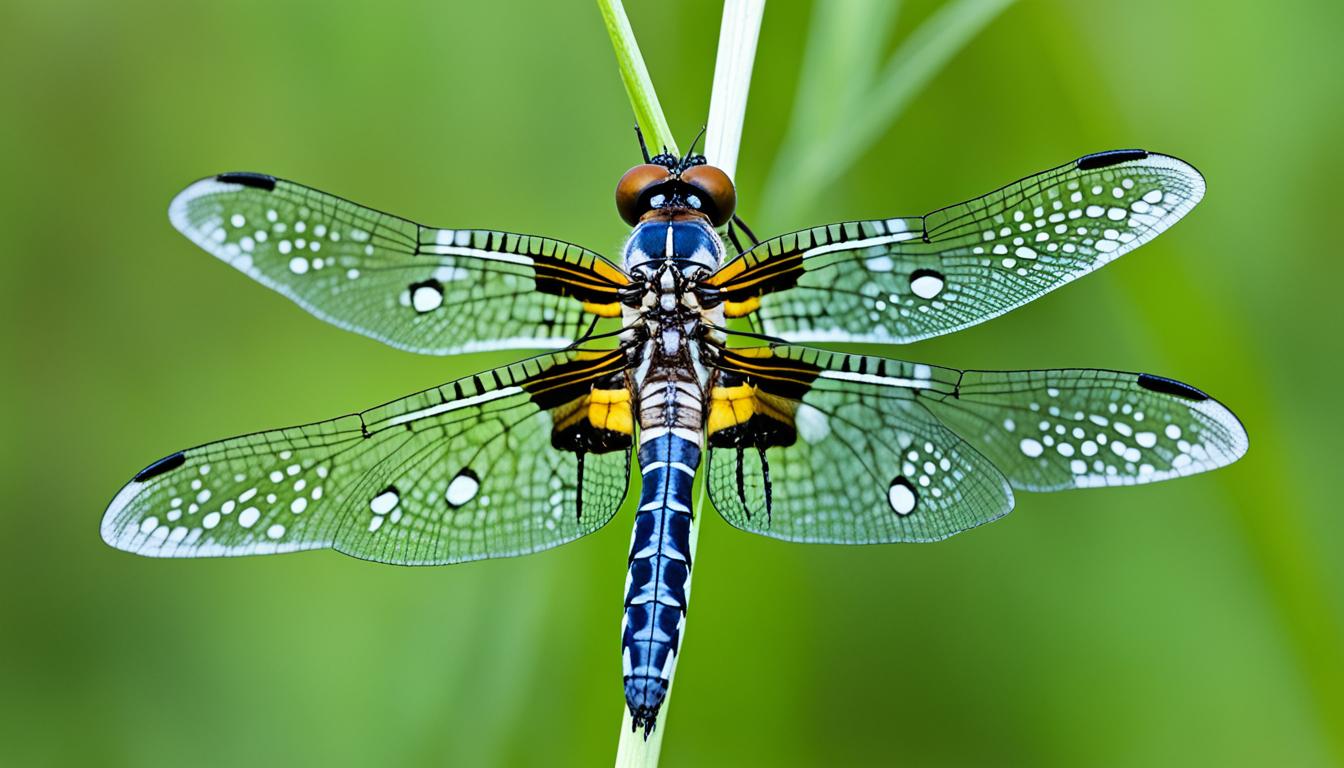Did you know the Twelve-spotted skimmer dragonfly has 12 dark spots on its wings? It is known scientifically as Libellula pulchella. This unique dragonfly is found in North America. It lives in the United States and southern Canada. These dragonflies are very skilled at flying. They hunt for food over ponds, lakes, and wetlands.
Learning about the Twelve-spotted skimmer dragonfly is key to understanding dragonfly migration. We explore their world to see what guides their journey and why it’s important. This helps us see how they affect their surroundings.
The Twelve-spotted Skimmer (Libellula pulchella) is a species of dragonfly in the family Libellulidae. Here are some names and common synonyms associated with this species:
- Libellula pulchella (Scientific Name)
- Twelve-spotted Skimmer (Common Name)
- Libellula pulchella pulchella (Subspecies)
- Libellula pulchella var. distincta (Variety)
- Libellula pulchella var. immaculata (Variety)
- Libellula pulchella var. latifasciata (Variety)
- Libellula pulchella var. mariana (Variety)
- Libellula pulchella var. media (Variety)
- Libellula pulchella var. nigrescens (Variety)
- Libellula pulchella var. obsoleta (Variety)
- Libellula pulchella var. subimmaculata (Variety)
- Libellula pulchella var. umbrosa (Variety)
These names encompass the main scientific and common names for the Twelve-spotted Skimmer dragonfly.
Introduction to Dragonfly Migration
Dragonfly migration is truly amazing and often not well understood. Some dragonflies, like the Pantala flavescens, have their migration patterns known worldwide. However, many others keep their migratory movements a secret. They may fly short or long distances, from places nearby to over thousands of miles.
Types of Dragonfly Movements
Dragonflies’ travel behaviors can be sorted into two main groups:
- Local movements: These are short moves, often to find better homes, food, or mates.
- Long-distance migrations: Dragonfly groups like Aeshna and Sympetrum travel far, crossing borders and continents.
Importance of Studying Dragonfly Migration
It’s key to know why and how dragonflies move. They help keep the balance in nature by eating pests and being food for other animals. Also, they tell us about the health of water and land areas. Learning about their travel and reactions to weather teaches us about the world’s ecology. It also helps us understand how other animals move and live well.
Studying dragonfly flight behavior and dragonfly orientation helps us see what guides their migrations. This knowledge can help us take care of these important insects better. By knowing more about what they need to travel, we can keep their homes safe.
Influence of Weather on Dragonfly Flight Behavior
Dragonfly migration is closely tied to the weather. The flight behavior and the number of dragonflies we see change with the weather. This includes elements like temperature, cloud cover, and wind direction.
Temperature and Cloud Cover Effects
Warmer temperatures make dragonflies more active. They fly around a lot when it’s warm. But, if it’s cloudy, you’ll see less of them flying.
Wind Direction Preferences
Different dragonflies like different wind directions. The larger Aeshna species prefer tailwinds, especially from the north. This helps them with their migration. On the other hand, the smaller Sympetrum species do better when the winds come from the east.
Learning about how weather affects dragonflies shows us their unique nature. It helps us understand why they move the way they do. This knowledge also teaches us about the world around us, where these amazing insects live.

